Developer: Konami Publisher: Konami Release: 04/87 Genre: Sports
If I had to trace my love of the occasional mini game collection it would probably come from Winter Games on the Commodore 64. The limited animation looked goofy as hell but if you could nail a triple somersault in the Hot Dog competition it was worth it. Other events like Figure Skating and Speed Skating allowed me to partake in activities I otherwise couldn’t in real life. Konami’s Track & Field carried on that tradition with a variety of summer games anyone could enjoy. I never played the arcade game but the NES port was a staple in everyone’s library in my neighborhood. It is a bit light on content and options but still good for a quick fix.
Track & Field is a combination of two Konami arcade games, Hyper Sports and the arcade version of Track & Field. This gives the game a wide breadth of content with 8 events altogether. The only event missing is the hammer throw, which would return in the sequel. Track & Field captured the spirit of competition in the Olympics better than any previous title. It was a perfect fit for the NES, with its simple yet nuanced gameplay. Despite its short content it still remains fun to hop in for a quick event or two.
Track & Field has eight events. The 100-meter dash, Hurdles, Long jump, Triple Jump, Skeet Shooting, Archery, High Jump and Javelin Throw can all be selected and played in any order. For the most part the controls in every event are simple. Most events require you to alternate button presses to build up speed before initiating your final action. In the hurdles this is easy as you simply need to press up to jump. Other events like the long jump and javelin throw require nuance. Learning when to release throw at a perfect angle can be tricky but extremely fun when mastered.
Most events have a minimum qualifier to move on which is reasonable but can be tough in certain cases like skeet shooting. Ah yes, skeet shooting. This remains the toughest competition to master, let alone learn. At its core skeet shooting is simple. Targets release and when they are in your reticle you can shoot them down. They come in groups of three, leaving you little time to think. Once you get into a groove it is almost magical as you knock out targets in rapid succession. But all it takes is one miss to ruin the streak. Its been thirty years since the game’s release and I still have trouble with skeet shooting. Archery is less complex but no less challenging. Determining the angle and wind trajectory is not intuitive but once you “get” it it becomes simple. It is my least favorite event however.
For as simple as the controls are I cannot help but feel as though Track & Field were made with turbo controllers in mind. I am sure there are thousands of old school gamers like myself who nearly ruined their fingers coming up with methods to tap the buttons as fast as possible. The most popular was the coin trick but I also used two fingers pinched together. With a turbo controller you can easily break the game. The world records go down fast.
While the single player mode is fun on its own it is incredibly limited and does not end. It simply loops and becomes more difficult over time. Even worse if you have a turbo controller the novelty wears off pretty quickly. It may be fun to be the Track & Field equivalent of a super human but it gets old fast. This is a much better game in multiplayer as a result. Competing against a friend to see who can achieve the highest score is a lot more fun than the brain dead AI. The only limiting factor is the selection of events. But even still, whether its for fifteen minutes or an hour, it remains fun.
Track & Field is a fun little diversion but not one you will return to long term. It has a very high pick up and play factor but could use more content. Than again, seeing how Track & Field II turned out I am not so sure…


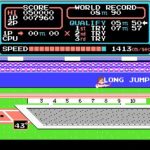
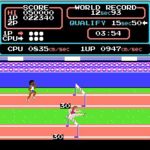
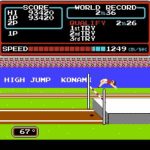
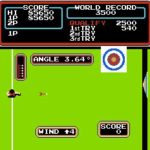
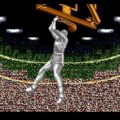
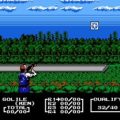

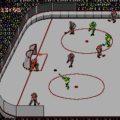
5 thoughts on “Track & Field”